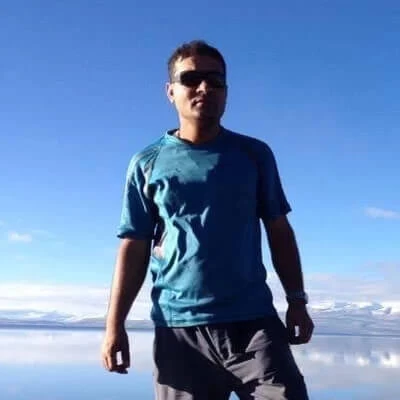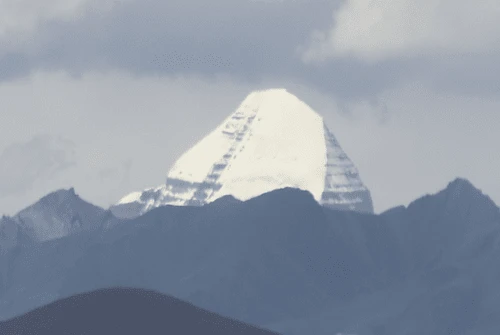What To Expect in The Mustang Tiji Festival Trek? [Key Highlights]
Experience the Traditional Tiji Festival: Participate in the authentic Tiji festival and have the chance to actively engage in its festivities.
Explore Nepal's Himalayas: Discover the scenic beauty and landscapes of Nepal's Himalayan region.
Customizable Itinerary Options: Choose your preferred itinerary to tailor the trek according to your interests.
Participate in Unique Tantric Ceremony: Engage in the special Tantric ceremony unique to the Himalayas.
Tour Pokhara and Explore the City of Lakes: Visit Pokhara, known as the city of lakes, and explore its cultural and natural attractions.
Witness the World's Deepest Kaligandaki Gorge: See the impressive Kaligandaki Gorge, recognized as the deepest gorge globally.
Travel to the Land of Mysticism: Embark on a journey to a mystical land, adding an element of enchantment to your experience.
Explore Hindu and Buddhist Pilgrimage Sites: Visit sacred pilgrimage sites in the Himalayas that hold significance for both Hinduism and Buddhism.
Experience Nepal's Tibetan Culture and Lifestyle: Immerse yourself in the culture and lifestyle reminiscent of Tibet while in Nepal.
Panoramic Views of the Surrounding Himalayas: Enjoy a journey with sweeping views of the Himalayan mountain range.
Observe Age-Old Monasteries, Caves, and Tibetan Buddhism Culture: Witness the historical richness of Tibetan Buddhism through ancient monasteries, caves, and cultural practices.
Opportunity to Take a Dip in Natural Hot Springs: Relax and rejuvenate with the chance to immerse yourself in natural hot springs
Tiji Festival dates for the years 2024 and 2025
The provided table displays the forthcoming Tiji Festival dates for the years 2024 and 2025.
| S.No | Tiji Festival Year | Tiji Festival Happening Dates |
| 1 | Tiji Festival 2024 | 5th, 6th and 7th May 2024 |
| 2 | Tiji Festival 2025 | 24th, 25th and 26th May 2025 |
The upcoming Tiji Festival Trek of 2024 is scheduled to fall on 5th May-7th May 2024.
- 05 May 2024 Tiji Festival in Lo-Mangthang (1st day)
- 06 May 2024 Tiji Festival in Lo-Mangthang (2nd day)
- 07 May 2024 Tiji Festival in Lo-Mangthang (3rd day)
On the 1st day of the Mustang Tiji Festival:
During the initial day of the Mustang Tiji Festival, the morning kicks off with monks gathering for Vajrakila prayers at Chode Gompa. The afternoon witnesses a flurry of activity in the square, accompanied by the resonating sounds of traditional long copper horns (dungchen) and drums. A centuries-old scroll painting (thangka) portraying Padmasambhava is unveiled on the south wall of the square. This thangka, adorned with an image of Padmasambhava and two Dakinis, is more than 400 years old. Following incense offerings by Ngagpas, Lo-Manthang presents six bowls of grain and torma on a wooden altar. Monks in red pointed hats then take their seats beneath the unfurled thangka, with the Khempo or abbot positioned on a slightly higher dias at the center.
Amid hymns and prayers, the masked dances commence and captivate the spectators in the Palace Square. Starting from the Mustang royal palace, the masked dancers, led by the Tsowo, perform a dance that begins with a private audience for the King in his private room. Recognizable by elaborate headgear, the Tsowo makes offerings, initiating the ceremony. They gradually leave the palace, moving down the square where the public and travelers eagerly await. The Tsacham, a gentle and slow masked dance with graceful movements and turns, unfolds over approximately 2 hours. The Tsowo, surrounded by other dancers in a Mandala formation, performs a total of about 52 different steps. The masked dances symbolize the preparation and invocation of gods, as well as the purification and preparation of the ceremonial ground. The Tsowo guides fellow dancers seamlessly through each form, signaling changes with verbal commands.
On the 2nd day of the Mustang Tiji festival:
The morning begins with prayers to Vajrakila and a monastery assembly. In the afternoon, another large thangka, resembling the earlier one, is unfurled. The masked dances on this day are more dynamic and executed in an aggressive style, featuring weapons and animal forms representing means to ward off evil. The climax involves Tsowo symbolically slaying a demon by piercing a straw effigy with a religious dagger, depicting the triumph of the deity Dorje Shunu over evil.
On the 3rd day of the Mustang Tiji Festival:
On the third and final day, the morning starts again with prayers to Vajrakila, followed by Tsowo offering ritualistic nectar as an appeal for help from all the gods. Before and after cutting the effigy, there are additional dances by masked monks depicting animals. The festival concludes with a lively procession led by masked dancers, followed by the King, royal family members, village development committee representatives, and local people. In the Mustang King's Palace, final celebrations involve prayers, rejoicing, and the exchange of greetings between the King, Khempo, and other monks. The people of Mustang express their gratitude for witnessing another Tiji Festival, hoping for many more prosperous years to come.
Brief Itinerary Of Mustang Tiji Festival For 2024
Here is a concise itinerary for the Mustang Tiji Festival:
April 25, 2024: Arrival in Kathmandu (1338 meters).
April 26, 2024: Sightseeing and Trek Preparation.
April 27, 2024: Drive to Pokhara (900 meters).
April 28, 2024: Fly to Jomsom and trek to Kagbeni (2800 meters).
April 29, 2024: Trek to Chele (3050 meters).
April 30, 2024: Trek to Syangmochen (3800 meters).
May 01, 2024: Trek to Dhakmar (3500 meters).
May 02, 2024: Trek to Charang (3600 meters).
May 03, 2024: Trek to Lo-Manthang (3720 meters).
May 04, 2024: Explore around Lo-Manthang.
May 05, 2024: Tiji Festival (1st day).
May 06, 2024: Tiji Festival (2nd day).
May 07, 2024: Tiji Festival (3rd day).
May 08, 2024: Trek to Ghami (3510 meters).
May 09, 2024: Trek to Samar (3620 meters).
May 10, 2024: Trek to Chhusang (2980 meters).
May 11, 2024: Trek to Muktinath (3700 meters).
May 12, 2024: Trek to Jomsom (2720 meters).
May 13, 2024: Fly back to Kathmandu via Pokhara.
May 14, 2024: Free day in Kathmandu.
May 15, 2024: Departure.
Important Information Before Going To the Tiji Festival
Best Time to Visit Upper Mustang Region
Travelers often inquire about the optimal time to visit the Lo-Manthang or Upper Mustang region. This area, being the driest in the Himalayas, lacks significant vegetation, except for some mountain grasses and bushes. However, locals cultivate seasonal vegetables, and potatoes are particularly renowned. The Upper Mustang region is accessible year-round, with minimal rainfall even during the monsoon months of June and July. Winter, mainly in November, December, January, and February, brings cold temperatures and snowfall. During December and January, fewer lodges and hotels operate, and fewer trekkers are present, as locals descend to lower altitudes due to extremely chilly conditions. Nevertheless, trekking remains possible.
The prime times to explore the Upper Mustang region are August, September, October, November, February, March, April, and May. For those planning to attend the Tiji Festival in 2022, it is scheduled from May 27th to May 29th. Travelers can make the most of their visit by combining the exploration of the Upper Mustang with the unique experience of the Tiji Festival, which occurs once a year.
Required Permits and Cost for Upper Mustang Trek along with Tiji Festival
For the Upper Mustang Trek, including the Tiji Festival, specific permits and costs are applicable. Upper Mustang is a restricted area, necessitating a Special Restricted Area Permit (RAP) in addition to the Annapurna Area Conservation Permit (ACAP) and Trekkers Information Management System (TIMS). The RAP costs 500 USD for foreign nationals, while the ACAP permit costs 30 USD and the TIMS permit costs 10 USD each. It's crucial to note that single entry into the Upper Mustang Region is strictly prohibited; a special permit requires a minimum of two trekkers and can be obtained through authorized trekking agencies from the Nepal Immigration Office. The total cost for these permits amounts to 540 USD per person due to the restricted nature of the Tiji Festival in Lo-Mangthang.
CHECKLISTS FOR TIJI FESTIVAL TREK
Valid Passport:
- Ensure your passport is valid for at least six months from the date of your trip.
Picture ID:
- Carry another form of picture ID, such as a driver’s license, for emergencies or as a substitute for your passport in case of loss.
- Keep a photocopy of your passport page in your wallet.
Air Tickets:
- Make copies of your flight tickets; these may be helpful in case of loss or other unforeseen circumstances.
Visa Clearance:
- Make a copy of your visa clearance, which can be useful in emergencies.
Payment Methods:
- MasterCard, Visa credit, and debit cards are accepted in Nepal. However, it is recommended to carry traveler's cheques and some cash for convenience.
Mobile Phone:
- If your cell phone is from CINGULAR USA or AT&T (USA) operators, it will work in Nepal. Ensure your mobile is in working order for communication during the trek.
Guiding, Food, and Lodging During Tiji Festival
During the Tiji Festival trek in Nepal, the guiding, food, and lodging arrangements typically follow the teahouse trekking model, offering a unique and immersive experience. Here's what you can expect:
Accommodation (Lodging):
- Accommodations primarily consist of local lodges known as teahouses.
- Whenever possible, you may stay in single rooms, but sharing rooms is common.
- Rooms are basic and usually include a bed with a pillow and blankets. Some may have electric lights.
- Teahouses have spacious dining room lounges, providing communal areas for relaxation.
Meals (Food):
- Meals are provided at the teahouses along the trekking route.
- The menu is not extensive but offers a variety of options, including potatoes, rice, noodle dishes, soup, and seasonal vegetables.
- Breakfast typically includes a variety of cereals, bread, and egg dishes.
- Snacks such as basic biscuits, chocolate, and soft drinks are available, and in some areas, fresh fruit is offered in season.
- While the food is usually plentiful and delicious, it's important to note that the cost of beers, local spirits, and additional snacks is usually at the traveler's expense.
Guiding:
- The trek is guided, and you will be accompanied by a knowledgeable guide who is familiar with the trekking route and local customs.
- Guides help facilitate communication with locals and ensure a smooth journey.
- It's customary to meet your porter at the teahouse where you stay overnight. Porters assist with carrying trekking gear and supplies.
Packing:
- It's advisable to pack your necessary items in your daypack, including essentials such as personal belongings, water, and any items you may need during the day.
The teahouse trekking experience provides an opportunity to immerse yourself in the local culture and hospitality of the region. While accommodations are basic, the warmth and authenticity of the experience contribute to the overall charm of the Tiji Festival trek in Nepal.
DRESS CODE FOR VISITING MONASTERIES, AND TEMPLES IN NEPAL
For visiting monasteries and temples in Nepal, there is a specific dress code to adhere to. Here are the guidelines:
![Mustang Tiji Festival Trek [Festival Dates For 2024/2025]](https://media.allnepalhiking.com/uploads/fullbanner/tiji-festival.webp)



